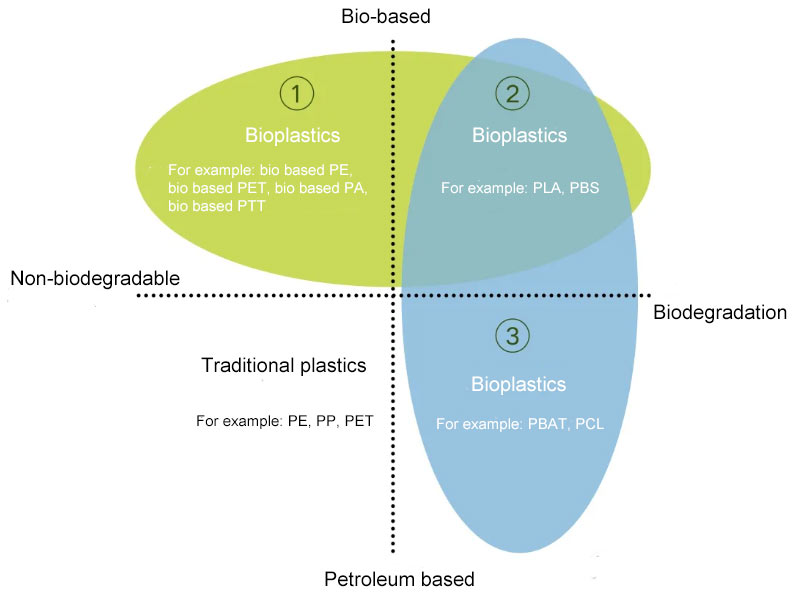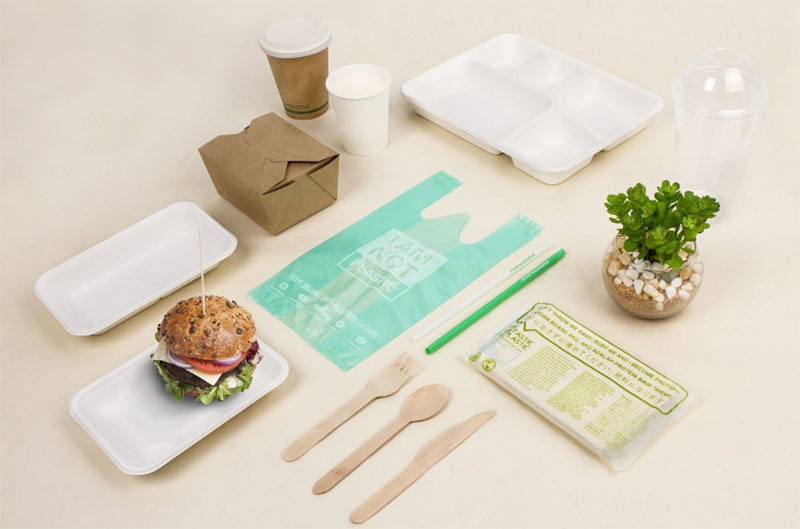In daily life, plastic products are almost everywhere, including shopping bags in supermarkets, disposable tableware, straws, and disposable ordinary plastic cups, all of which are closely related to us. With the increasing awareness of environmental protection among people, plastic products made from materials such as polyethylene or polypropylene are not easily decomposed and have a significant impact on the environment. Therefore, a biodegradable material product has been studied to replace them. So, what is biodegradable material? Which products are biodegradable materials? Let’s talk about specific issues related to biodegradable materials.
What is a biodegradable material?
Biodegradable materials are actually easy to understand. Biodegradable materials belong to polymer materials, which generally refer to a type of material that can degrade itself in a short period of time under natural conditions, which is commonly referred to as biodegradable materials. The key point to note is that the production materials of biodegradable materials come from natural plants, do not contain chemical components, and are harmless to the human body and environment.

Which products are biodegradable materials?
| Biodegradable material | CAS | Application |
| PLA | 26100-51-6; 26023-30-3 | Hard packaging, disposable tableware, film bags, fiber fabrics, 3D printing |
| PBS | 25777-14-4 | Packaging films, lunch boxes, cosmetic and pharmaceutical bottles, electronic device packaging, etc; It can also be used for disposable appliances, such as disposable dining utensils, disposable medical supplies, etc; In addition, it can also be used in agricultural fields, such as agricultural films, pesticides, and fertilizer slow-release materials; It can also be used in medical fields, such as biomedical polymer materials |
| PBAT | 55231-08-8 | The plastic packaging industry, such as shopping bags and garbage bags, is also useful in fields such as tableware and plastic film |
| PLGA | 26780-50-7 | Unshaped polymer for surgical sutures, anti adhesion membranes, and tissue engineering scaffolds |
| PCL | 24980-41-4 | Polycaprolactone used surgical sutures, orthopedic splints, radiotherapy plates, resin bandages, dental impressions, etc; Coatings, inks, hot melt adhesives, non-woven fabric adhesives, shoe materials, structural adhesives, etc; Blow molded films, laminated materials, etc; Handmade models, organic colorants, powder coatings, etc; 3D printing materials, etc |
| Caprolactone | 502-44-3 | Used for preparing polycaprolactone ε- Caprolactam, adhesive, elastomer, etc; It can also be mixed with various resins to improve its luster, transparency, and anti adhesion. |
| PGA | 26009-03-0 | The main applications are surgical suture, drug controlled release carrier, fracture fixation materials, tissue engineering scaffold, suture reinforcement materials; It has good application prospects in the fields of agricultural film, fresh packaging, and bottle materials. |

What are the development prospects of biodegradable materials?
Against the backdrop of increasingly serious environmental issues, environmental protection has become a global focus of attention. Many countries and enterprises have taken measures to reduce environmental pollution. Faced with the advancement of the environment, biodegradable materials have become the mainstream product of the times. In summary, biodegradable materials are a material of significant environmental significance, and their manufacturing and use can play an important role in protecting the environment and supporting sustainable development.